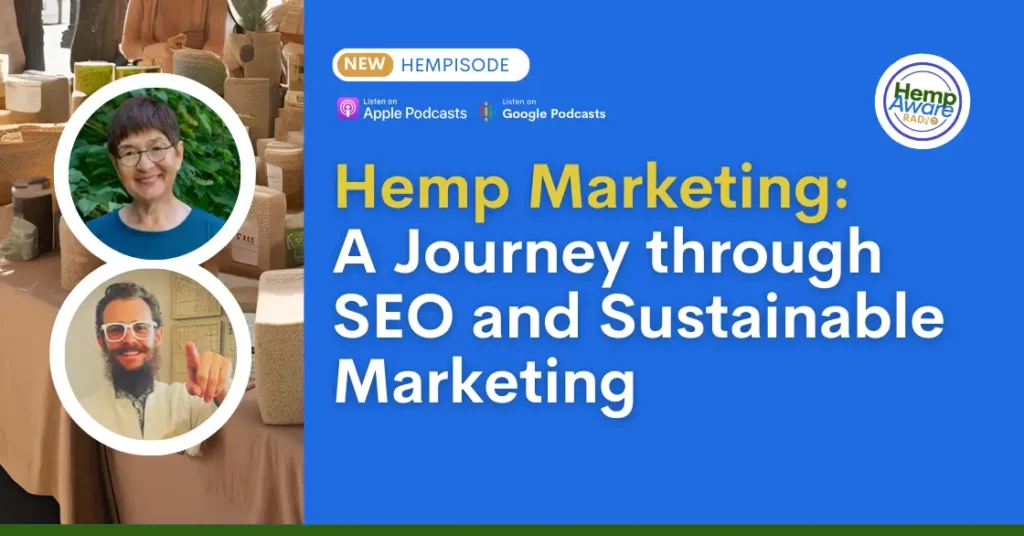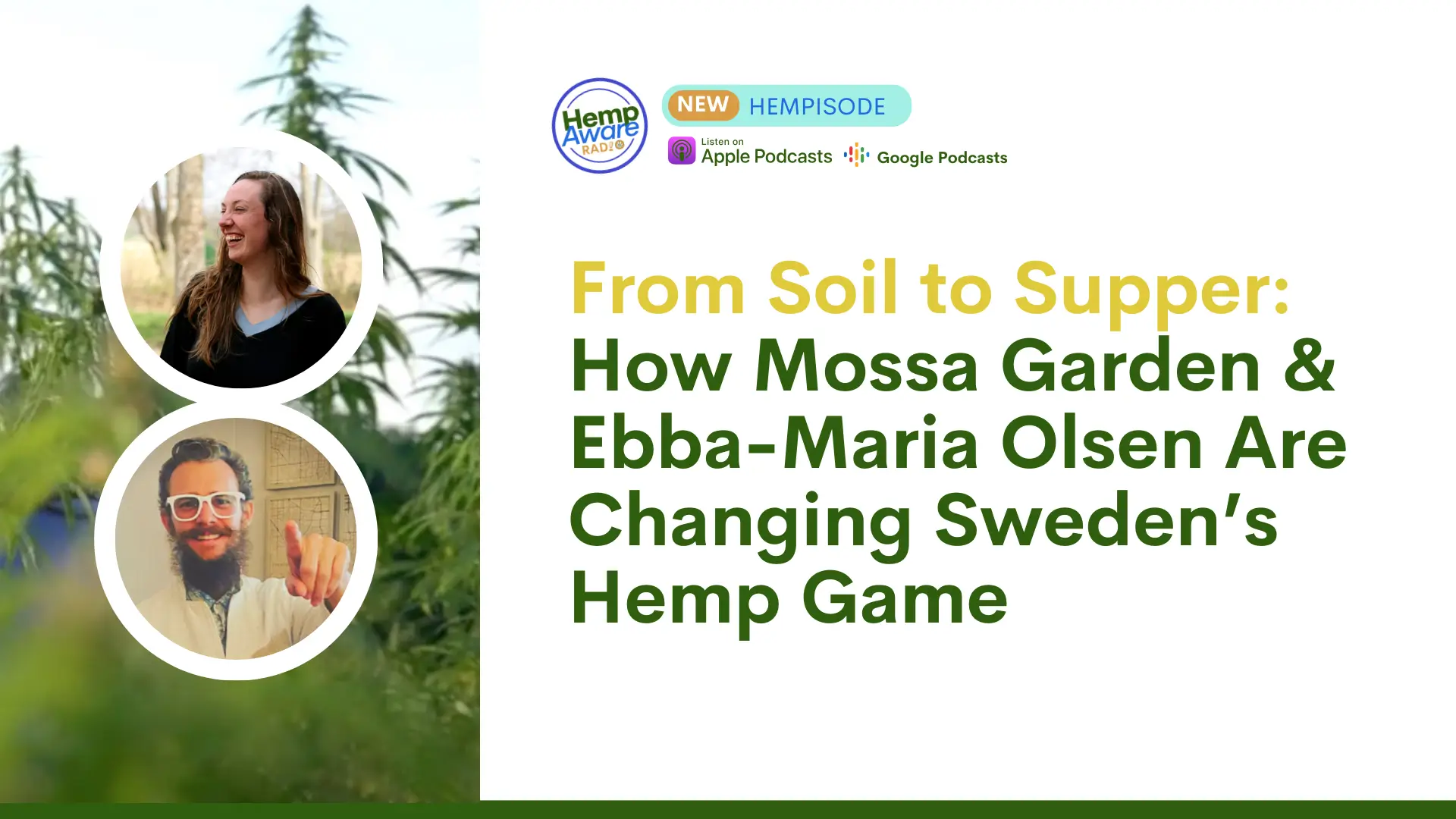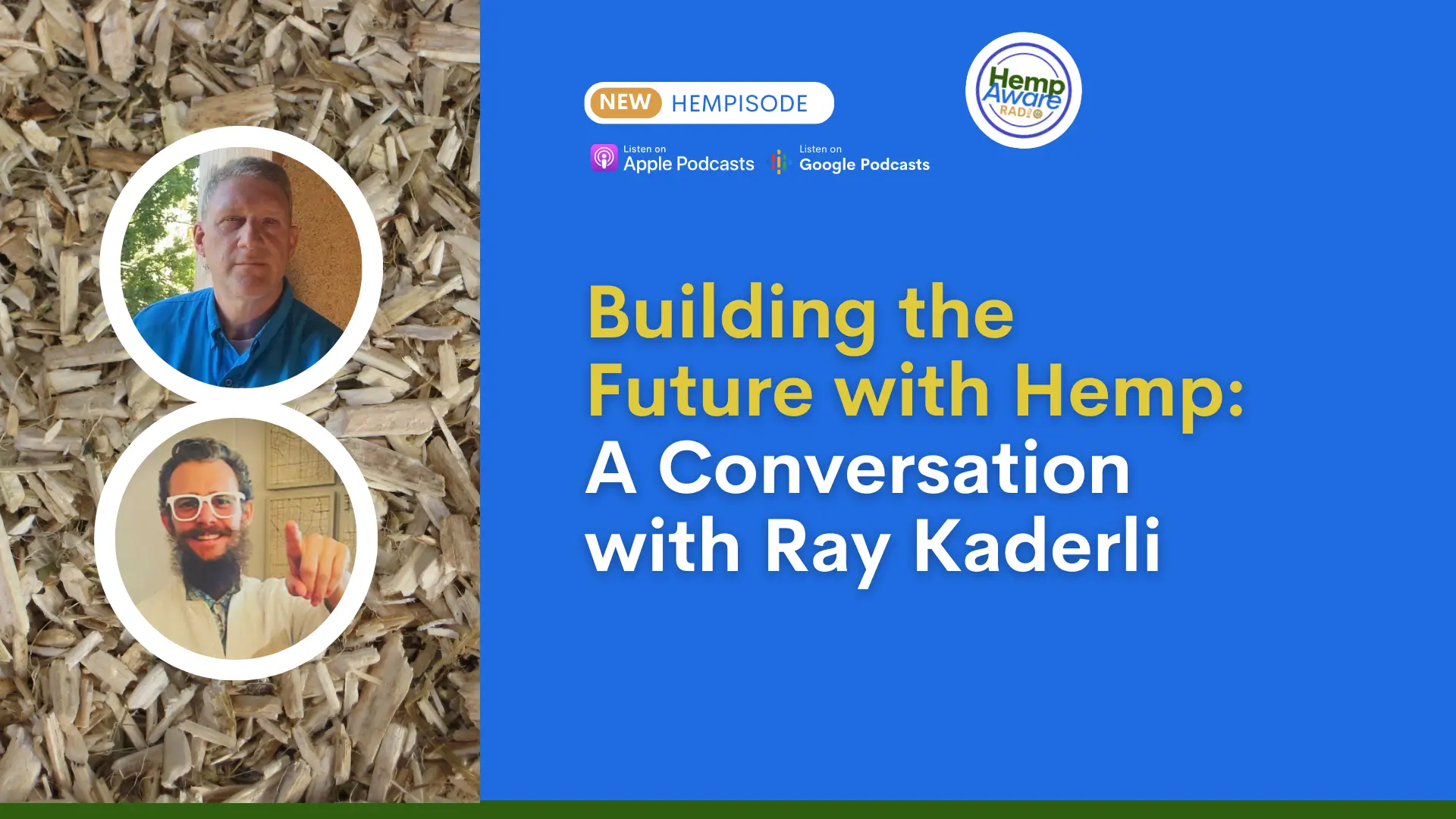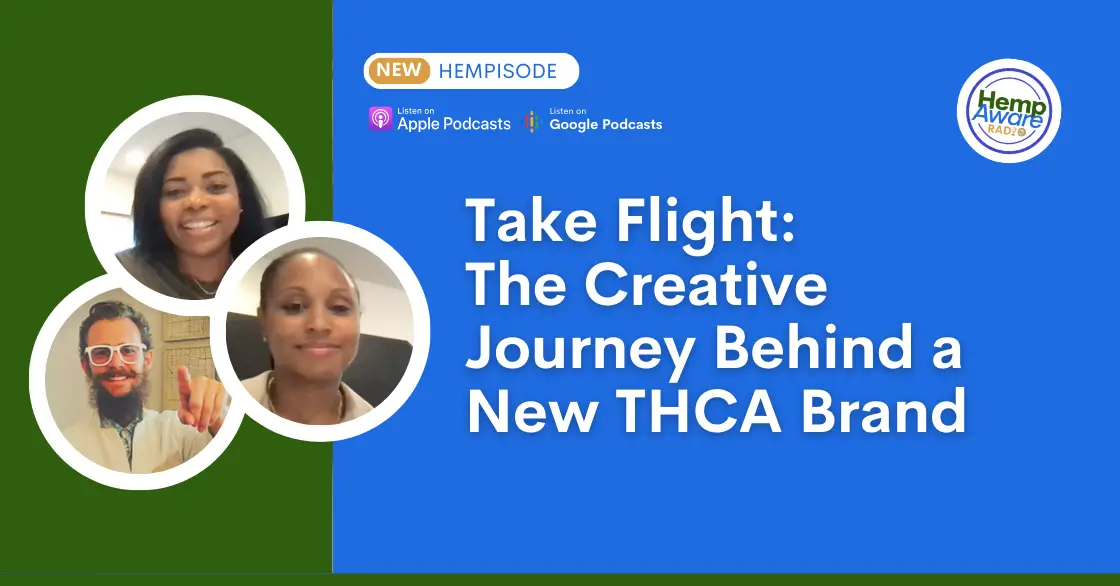When I first ventured into the world of hemp marketing, I wasn’t just captivated by the plant’s potential— I was intrigued by how the right marketing strategies could elevate a brand to new heights.
After countless hours of research and digests, I discovered a captivating conversation with Jackie Smith of 3 Pillars Marketing, which illuminated the intersection of SEO and the rapidly evolving hemp market.
Today, I’m excited to share transformative insights that may empower your brand with tools to succeed in today’s digital landscape.
TL;DR
In the hemp industry, integrating sustainable marketing can strengthen brand loyalty.
By combining eco-friendly practices with storytelling, transparency, and community engagement, businesses can connect with consumers on a deeper level.
This creates brand ambassadors who actively promote your mission and products.
Unpacking the Green: The Unique Intersection of Hemp and SEO
In recent years, hemp has carved out a unique niche in the market.
With global trends shifting toward sustainability, the need for effective marketing strategies has increased significantly.
This is where SEO (Search Engine Optimization) comes into play.
So why is SEO crucial for the hemp industry? Let’s dive in.
Why SEO is Crucial for the Hemp Industry
It’s not just about visibility.
For hemp businesses, optimizing your online presence means more than competing for clicks.
It’s about educating consumers and guiding them through their purchasing journey.
Effective SEO communicates clearly what your business does.
It lets potential customers know how you can help solve their problems.
- The hemp industry is burgeoning, with an anticipated growth rate of
X%by 2030. - Over
X%of consumers now favor eco-friendly brands, altering market dynamics.
These statistics signify a direct link between sustainable practices and consumer interest.
As businesses in the hemp sector implement SEO strategies, they can attract a larger audience seeking eco-friendly solutions.
The Rising Interest in Sustainable Products
Today’s consumers are increasingly aware of their impact on the environment.
They want products that not only serve a purpose, but also align with their values.
Hemp, known for its sustainability, plays a pivotal role in this trend.
As I often say,
“Marketing is simply communicating that I got a solution to your problem.”
This idea resonates with consumers who are looking for more than just a product; they seek solutions that are environmentally responsible.
Challenges Faced by Hemp Businesses in Digital Marketing
While the opportunities are plentiful, challenges abound.
One major hurdle is the differentiation between marijuana and hemp in digital marketing. Many consumers still associate hemp with cannabis, which complicates SEO efforts.
Hemp marketing involves a unique approach.
Focusing on audience-specific keywords and providing valuable content is essential.
A common mistake among hemp businesses is to prioritize internal narratives. Instead, they should ask:
What problems can we solve for our customers?
Hemp’s Role in Regenerative Agriculture
Hemp is not just a product; it’s part of a larger ecological solution.
Through regenerative practices, hemp helps restore soil health and reduces dependence on chemical fertilizers.
This aligns well with the growing consumer preference for sustainable options.
Growing Consumer Awareness for Eco-Friendly Products
Consumer behavior is shifting toward brands that prioritize sustainability.
Businesses that adapt to this change benefit greatly.
As we navigate this new landscape, staying informed and agile is crucial.
Think about it: how can your brand communicate its sustainability message effectively?
Marijuana vs. Hemp: Underlining Digital Marketing Differences
Understanding the legal and market differences between marijuana and hemp is vital in shaping your SEO strategy.
It’s not just about what you sell—it’s about how you position your brand in a crowded digital marketplace.
Successful hemp marketing requires a mix of current information and optimization techniques.
It is essential for businesses to craft their content around what potential customers are searching for.
SEO Strategies for Hemp Businesses
Here are some strategies businesses can implement:
- Keyword Research: Know your audience and the terms they are searching for.
- Content Creation: Develop valuable content that addresses consumer needs.
- Technical SEO: Focus on optimizing your website’s structure and usability.
Each of these strategies plays a critical role in enhancing your brand’s visibility in the online space.
Visualizing Growth
| Hemp Business Growth | Eco-Friendly Consumer Preference |
|---|---|
| CAGR of X% by 2030 | X% of Consumers Favor Eco-Friendly Brands |
As these numbers indicate, aligning your SEO and marketing strategies with current trends is essential for success.
“Everything is interconnected, what you give today is valuable.”
This principle should govern how we approach marketing in the hemp industry.
By staying ahead of the curve and focusing on the unique aspects of your offering, hemp businesses can thrive in a changing landscape.
The power of SEO lies in its ability to connect these dots efficiently, allowing you to communicate your value effectively.
Understanding Your Audience: Crafting Target Personas
To effectively target your audience, you must understand them deeply.
This means knowing their needs, preferences, and where they hang out online.
The process starts with identifying market needs.
Why is this so critical? It’s simple.
If you don’t know what your audience wants, how can you provide it?
Think of it like fishing: you wouldn’t fish without knowing what bait to use.
Similarly, marketing without understanding your audience’s needs is likely to miss the mark.
The Importance of Identifying Market Needs
Identifying market needs is like taking the pulse of your audience.
Here’s how to approach it:
- Conduct surveys or interviews.
- Analyze feedback from existing customers.
- Observe competitors and their customers.
By gathering this information, you’ll be equipped to tailor your products and messaging effectively. Remember, “You have to market to a person.”
This means you need to speak their language and resonate with their needs.
Creating Detailed Customer Personas
Once you’ve identified market needs, the next step is creating detailed customer personas.
These are fictional characters that embody your ideal customers.
Why do you need them?
They help you understand and anticipate your customers’ behaviors.
Here’s how to create a compelling persona:
- Gather demographic information: Age, gender, location, occupation.
- Understand their pain points: What problems are they facing?
- Explore their online habits: Which social media platforms do they use? What websites do they visit?
Customer personas should be specific because generalizations can lead to ineffective marketing strategies.
One-size-fits-all strategies often fail because they neglect the unique characteristics of different groups within your audience.
Where to Find Your Customers Online
Finding your customers online is crucial for effective marketing.
But where do you start? Here are some tips:
- Look for industry-related forums and online communities.
- Explore social media groups specific to your market.
- Utilize analytics tools to see where your traffic comes from.
With this information, you can target your messaging on platforms they frequent.
Being where your audience is will make your marketing efforts more effective.
Stop talking about yourself so much; it’s about them.
Shift your narrative to focus on how you can solve their problems.
Identifying Pain Points and Needs
To further enhance your understanding of your audience, pinpoint their pain points.
What keeps them up at night? What challenges do they face?
Answering these questions helps you build a connection.
When potential customers see that you understand them, they’re not only more likely to buy from you, but they may also become advocates for your brand.
In summary, understanding your audience is foundational for successful marketing. It allows you to craft targeted campaigns and build better connections.
The necessary steps include identifying market needs, creating customer personas, and knowing where to find your customers online.
By embracing these principles, you will not only connect more meaningfully with your audience—but you will also position yourself competitively in the market.
| Step | Details |
|---|---|
| Identify Market Needs | Conduct surveys, analyze feedback, observe competitors. |
| Create Customer Personas | Gather demographic data, identify pain points, assess online habits. |
| Find Customers Online | Check industry-related forums, explore social media groups, use analytics tools. |
Technical SEO: The Foundation of Your Digital Presence
In today’s digital age, having a robust online presence is more crucial than ever.
But what does it take to climb the search engine rankings?
The answer lies in technical SEO. It’s more than just catching someone’s eye; it’s about being found for the right reasons. So let’s dive into the essentials.
Keywords: What Are Your Customers Really Searching For?
Understanding the language your customers use online can be a game changer.
This means performing market research and pinpointing keywords that resonate with your target audience.
Think about it: would you use the same words to describe your product that your customers do? Probably not.
- Identify your audience: Understand their habits and preferences.
- Use keyword tools: These help in discovering what phrases potential customers are typing into search engines.
- Stay updated: Keywords can shift over time, so regular updates are necessary.
Jackie once said,
“It’s the idea of getting found online and being found by the right customers.”
Knowing the right terms can lead your ideal audience straight to your digital doorstep.
The Importance of Site Structure and User Experience
Your website’s structure plays a vital role in SEO.
A confusing site can frustrate users and make them leave faster than you can say “bounce rate.”
Here’s why good structure matters:
- Easy Navigation: Users need to effortlessly find information.
- Clear Hierarchy: A logical structure helps search engines understand your content.
- Mobile Optimization: A mobile-friendly site is essential, as more people browse on their phones.
High-quality user experience can enhance engagement. And when users stick around longer, search engines take notice. This interaction boosts your rank significantly. Remember that the goal is to create a pleasant digital journey for your visitors.
Best Practices for On-Page SEO
What exactly does on-page SEO entail? It’s all about optimizing individual pages to rank higher.
Here are some best practices:
- Optimize Titles: Make sure your page titles clearly reflect your content.
- Use Header Tags: Structuring your content with
<H1>,<H2>, etc., enhances readability. - Incorporate Alt Tags: Remember, “Images can rank quicker than the whole page, if done right.” Using alt tags not only increases visibility but also aids accessibility.
It’s these little details that accumulate to create a powerful overall strategy.
You might think it’s tedious, but proper optimization pays off in the long haul.
Tracking SEO Performance
How do you know if your SEO efforts are actually paying dividends? Tracking performance metrics is key. Some essential metrics include:
- Engagement Metrics: How long do users stay on your site?
- Conversion Rates: Are visitors taking the desired actions?
SEO isn’t just a one-time effort; it’s a continuous cycle of improvement.
If something isn’t working, it’s important to tweak your approach.
Regular analysis keeps your strategy fresh and effective.
Example of a Strong vs. Weak Heading Structure
| Strong Heading Structure | Weak Heading Structure |
|---|---|
<H1>Understanding Technical SEO</H1> | <H1>Welcome to Our Website</H1> |
<H2>Why Keywords Matter</H2> | <H2>About Us</H2> |
This visual representation reflects how a solid header structure can not only draw in readers but also be more favorable for search engines.
The way you frame your headings can significantly boost visibility.
Now that you have an understanding of essential technical SEO elements, it’s time to think about your own digital space.
Are you ready to put these actionable tips into practice?
The right SEO strategies can turn the tide, especially in the hemp and cannabis sectors.
After all, communication is key.
Cultivating User Engagement: Keeping Visitors Around
Engaging visitors on your website is crucial for success.
But why does content quality matter for SEO?
In the digital world, quality is paramount. High-quality content keeps readers interested, lowers bounce rates, and attracts search engines like a magnet. If visitors find your site valuable, they will stay longer.
Think of it like this: if you throw a great party, guests won’t want to leave. Similarly, a well-crafted article or blog post encourages visitors to linger.
1. Why Content Quality Matters for SEO
Search engines, like Google, reward sites that provide valuable content.
They want users to have a positive experience.
If your content is clear, informative, and well-structured, you’re more likely to rank higher. Simple, right?
- High-quality content leads to better engagement.
- More engagement translates to bigger rankings.
- Quality content encourages organic shares, further enhancing visibility.
When users engage with your content, it signals to search engines that your site is valuable. “
The longer a person stays on your website, the more Google loves you.
” So, what can you do to keep them around?
2. Strategies to Lower Bounce Rates
Bounce rates measure how quickly visitors leave your site after viewing just one page.
A lower bounce rate suggests better engagement. Here are a few strategies to achieve this:
- Internal Linking: Use internal links to guide users to related content. This keeps them exploring. If they finish reading one article and are intrigued by another link, they’re likely to click through.
- Interactive Elements: Incorporating polls, quizzes, and videos can captivate your audience. They might engage with your page longer just by participating.
- Clear Navigation: A well-structured website makes it easy for users to find what they want. A confusing layout sends visitors packing.
Each strategy helps enhance user experience.
And as we just discussed, good user experience contributes to better SEO.
3. How to Create ‘Sticky’ Content
Creating ‘sticky’ content means producing material that keeps users coming back.
Here are some simple tactics you can employ:
- Fresh Updates: Regularly update your site with new articles or features. This reinstates your site’s authority and reliability.
- Valuable Information: Focus on providing tips and tricks, or insights that the audience finds useful. Empathy in your content will resonate with readers.
- Engaging Headlines: Your headlines are the first things users see. Craft titles that grab attention but remain honest to the content.
When content resonates with readers, they share it.
This is how your online credibility grows.
“Content is critical for engaging users.”
Think about your own habits: when you find something valuable, you share it, right?
Wrap Up
Encouraging longer site visits involves more than just adding a few links.
It’s about building a conversation with your audience.
Utilize these techniques and watch your visitor engagement soar.
Don’t hesitate to experiment and find what works best for your audience.
After all, keeping visitors around means long-term success for your brand.
| Strategy | Effectiveness |
|---|---|
| Internal Linking | High |
| Interactive Elements | Moderate |
| Clear Navigation | High |
Sustainable Marketing in the Hemp Industry: A Win-Win Approach
Sustainability isn’t just a buzzword; it’s a necessity for modern businesses, especially in the hemp industry.
As I reflect on effective marketing strategies, I find an undeniable truth: combining eco-friendly practices with solid marketing can resonate deeply with consumers.
Why is Sustainability Important?
First off, let’s think about this: are consumers more likely to support a brand that genuinely cares for the planet? The answer is almost invariably yes.
More consumers then ever prefer brands that demonstrate sustainability.
This isn’t just a fleeting trend; it’s a shift in consumer values. Integrating these principles leads to stronger connections with your audience.
Combining Eco-Friendly Practices with Solid Marketing
- Eco-friendly sourcing: How are your products made? Where do your materials come from? These questions matter greatly.
- Ethical production: Are your production practices sustainable? Ethical manufacturing shows potential customers your commitment to doing good.
- Packaging practices: Consider biodegradable or recycled materials. Attractive packaging doesn’t have to come at the cost of the earth.
By focusing on these elements, businesses aren’t just promoting a product but positioning themselves as part of a larger movement. That’s powerful.
Establishing Transparency and Authenticity
Do people trust you? They should. Transparency is key.
Brands that openly share their processes and challenges can foster a loyal customer base.
As you might have heard,
If you are a business that’s willing to show your ugly side, that gets people’s attention.
Emphasizing real stories from your journey can strengthen that bond. It reveals your authenticity.
This behind-the-scenes insight can provide valuable engagement.
For instance, consider how sharing the sourcing of materials or showcasing the lives of the people involved in production makes your brand more relatable.
Customers appreciate companies that are honest, and sharing these details can turn them into brand ambassadors who promote your products within their social circles.
Engaging Customers through Stories
How often do we hear about success stories in the industry?
I believe these narratives can significantly impact brand loyalty.
Case studies of successful hemp brands show how sharing engaging stories has increased their visibility and sales. Customers are more likely to buy from brands they feel connected to.
Table: Impact of Sustainability in Marketing
| Fact | Data |
|---|---|
| % of Customers Prefer Sustainable Brands | X% |
| Increased Sales after Engaging Stories | Varied % |
These statistics, while flexible, paint a vivid picture of how powerful storytelling can be. It’s about weaving sustainability into your narrative. Perhaps this resonates with you as much as it does with me.
Turning Customers into Brand Ambassadors
Finally, let’s touch on a vital point: How do we turn customers into ambassadors?
The answers lie in the relationships we build. Sales are not the end of a dialogue; as the quote goes,
The sale doesn’t end with the sale.
Stay engaged with your audience, encourage feedback, and create community interactions. By doing this, you cultivate loyalty that goes beyond transactions.
In essence, sustainable marketing is about creating a win-win situation.
Customers love supporting brands that prioritize the planet. Brands gain increased loyalty and engagement.
If you’re incorporating sustainable practices into your marketing, you’re not just selling.
You’re becoming part of a journey that matters.






